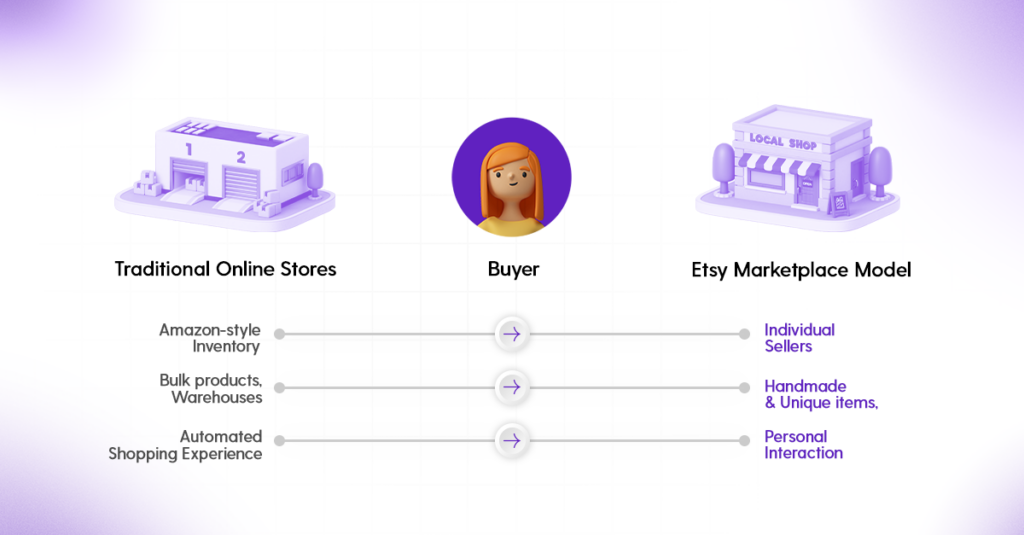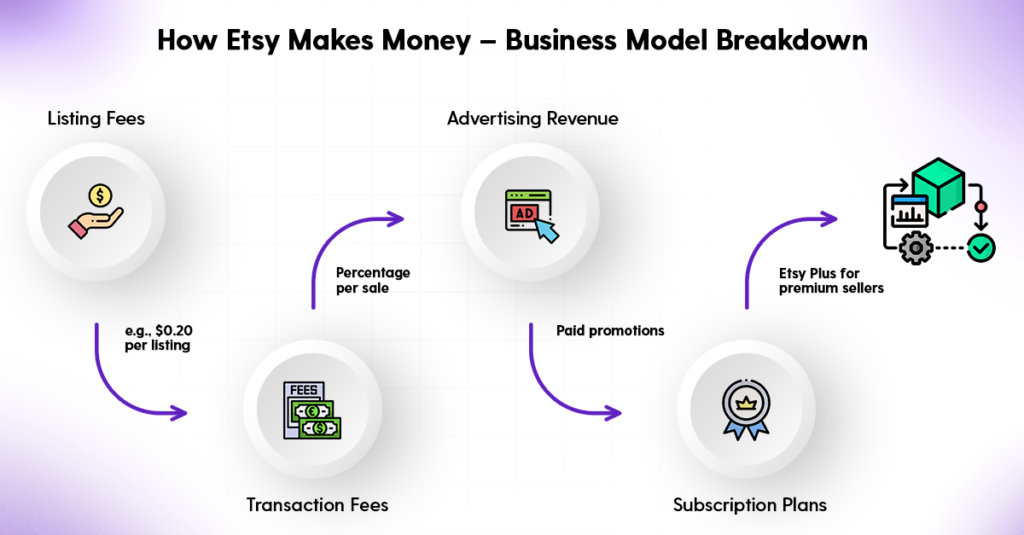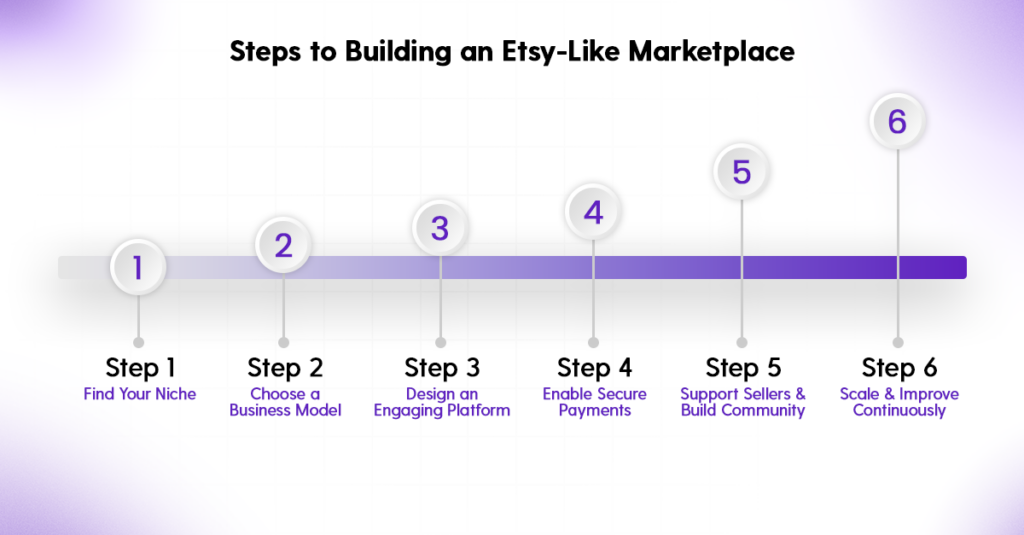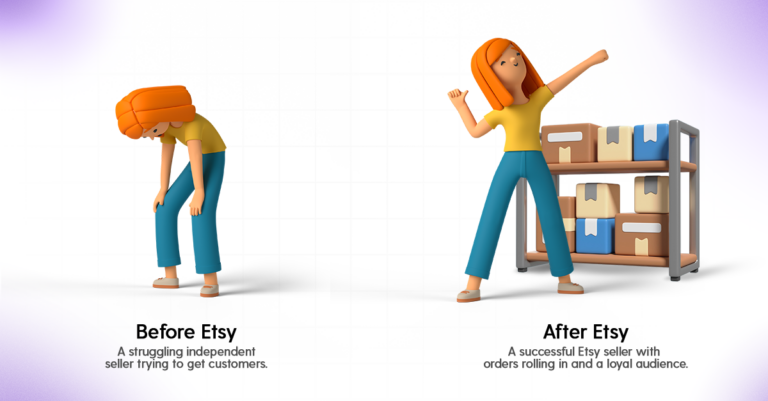Etsy isn’t just another e-commerce platform — it’s a thriving global handmade marketplace built around creativity, craftsmanship, and independent sellers. Unlike traditional online retailers that focus on mass-produced goods, Etsy has carved out a unique niche by connecting buyers with handmade, vintage, and one-of-a-kind items that aren’t easily found elsewhere.
Since its launch in 2005, Etsy has become the go-to destination for artists, makers, and small business owners who want to sell their goods without needing a brick-and-mortar store. Whether it’s custom jewelry, hand-knitted scarves, vintage furniture, or personalized gifts, Etsy has built a space where creativity flourishes and shoppers come to find something special.
At its core, Etsy is more than just a platform for transactions — it’s a community. Buyers and sellers engage with each other, leave thoughtful reviews, and form long-term relationships. Many customers return to Etsy time and time again, not just for the products but for the experience of shopping small, supporting independent creators, and knowing that what they purchase has a personal touch.
What is Etsy and How Does It Work?
What Makes Etsy Different from Other Marketplaces?
If you compare Etsy to massive e-commerce giants like Amazon or eBay, the differences become clear. While those platforms focus on convenience and competitive pricing, Etsy is all about originality. The marketplace is carefully curated, ensuring that only handmade, vintage, and craft supplies are listed.
This focus on uniqueness is what draws millions of shoppers to Etsy every year. Unlike generic online stores, where mass production dominates, Etsy prioritizes products with a story. A ring on Etsy isn’t just a piece of jewelry — it might be handcrafted by an artisan who sources ethical gemstones, customizes the design based on a personal request, and ships it with a handwritten note.
Another key difference is the seller experience. On Etsy, independent makers have the freedom to brand their own storefronts, communicate directly with customers, and set their pricing and policies. The platform also offers built-in marketing tools, making it easier for sellers to reach potential buyers without needing advanced digital marketing skills.

Who Shops on Etsy?
Etsy appeals to a broad range of buyers, from gift seekers looking for something meaningful to collectors searching for rare vintage finds. Some are DIY enthusiasts hunting for high-quality craft supplies, while others are eco-conscious shoppers who prefer sustainable, handmade goods over mass-produced alternatives.
For many, Etsy is the first stop when they need a personalized or one-of-a-kind item. The marketplace thrives on the idea that shopping should be as personal as the items themselves. Whether it’s a dog-mom ordering a custom toy, a couple searching for handmade wedding décor, or an artist looking for unique supplies, Etsy’s audience values craftsmanship and authenticity.
How Etsy’s Marketplace Model Works
At a glance, Etsy’s model seems simple peer-to-peer (P2P) model: independent sellers list their products, buyers browse and purchase them, and Etsy facilitates the transaction. But beneath the surface, there’s a well-oiled system that keeps the marketplace running smoothly.
Sellers pay a small listing fee for each product they showcase, and Etsy takes a percentage of each sale as a transaction fee. There’s also an optional advertising system where sellers can promote their products both on and off the platform. This revenue model allows Etsy to remain accessible to small businesses while ensuring the marketplace is financially sustainable.
Despite its global reach, Etsy retains a personal, small-business feel. Its marketplace is designed to foster direct communication between buyers and sellers, making it easy for customers to request customizations, ask questions, and even build relationships with their favorite shop owners.

Why Etsy’s Marketplace Model is Worth Replicating
Etsy has proven that e-commerce doesn’t have to be dominated by large corporations. By focusing on community, creativity, and niche products, it has built a highly successful marketplace that continues to grow. For entrepreneurs looking to create their own online marketplace, Etsy’s model serves as an excellent blueprint — one that prioritizes user experience, seller success, and product originality.
If you’re considering launching a marketplace like Etsy, understanding what makes it successful is the first step. From its seamless shopping experience to its seller-friendly approach, Etsy has mastered the art of online commerce for unique and handcrafted goods. And with the right tools and strategy, you can too.
The Genesis of Etsy: A Marketplace Born from Necessity
Etsy’s story begins in 2005 when Rob Kalin, a furniture maker, struggled to find an online marketplace suited for selling handmade goods. At the time, platforms like eBay and Amazon dominated e-commerce, but they prioritized mass production and general merchandise rather than niche, artisan-made items. Frustrated by the lack of options for independent creators like himself, Kalin, along with Chris Maguire and Haim Schoppik, set out to build a platform designed specifically for makers, artists, and vintage collectors.
From its humble beginnings, Etsy rapidly attracted sellers looking for an alternative to traditional e-commerce platforms. Its emphasis on craftsmanship, storytelling, and community engagement resonated with creators worldwide, and soon, Etsy became the go-to destination for unique and handcrafted goods. What started as a small project to support independent artists quickly turned into a multi-billion-dollar marketplace with millions of active buyers and sellers across the globe.
Etsy’s success wasn’t just about providing a place to sell handmade items — it was about creating a marketplace experience that encouraged creativity, connection, and entrepreneurship. The platform’s ability to foster a loyal community of artisans and shoppers set it apart from mainstream competitors and became the foundation of its long-term growth.
Today, Etsy is valued at over $20 billion, proving that handmade-focused marketplaces have massive potential. If you’re wondering how to clone Etsy or build a similar business, it’s important to study what made it successful.

How to Launch a Marketplace Like Etsy
If you’re inspired by Etsy’s journey and want to create a similar online marketplace, it’s important to understand steps involved in building a successful platform. Whether you’re considering an Etsy clone script or developing a custom solution, understanding Etsy’s model and features is key. While Etsy carved out its niche in handmade and vintage goods, the same principles can be applied to other types of niche marketplaces, whether for digital art, eco-friendly products, or specialty crafts.
1. Identify Your Niche & Market Positioning
Every great marketplace starts with a clear focus. Etsy’s strength lies in its commitment to handmade and vintage supplies — this specificity attracts a dedicated customer base. When building your own marketplace, consider:
- What type of products or services will your platform offer?
- Who is your ideal buyer and seller?
- What problem does your marketplace solve?
- How is your platform different from existing competitors?
For example, if you’re targeting eco-conscious consumers, you might create a marketplace exclusively for sustainable and ethically sourced goods. If you’re focusing on artists, you might build a platform that specializes in selling digital art or custom prints.
2. Develop a Business Model That Supports Growth
Etsy generates revenue through multiple streams, including listing fees, transaction commissions, advertising, and subscription plans for sellers. When developing your own marketplace, you need to determine how you’ll monetize your platform while keeping it attractive to both buyers and sellers. Common marketplace revenue models include:
- Commission-Based – Taking a percentage of each sale (like Etsy).
- Subscription-Based – Charging sellers a monthly or yearly fee to list and sell.
- Listing Fees – Charging sellers a fee per product listing.
- Freemium Model – Offering basic marketplace access for free while charging for premium features (such as Etsy Plus).
A sustainable business model ensures that your marketplace remains profitable while still offering value to sellers and buyers.
3. Design a Seamless User Experience for Buyers & Sellers
A great marketplace is easy to navigate, visually appealing, and simple to use for both buyers and sellers. Your platform should provide:
- Intuitive seller dashboards for managing product listings, orders, and payments.
- Advanced search and filtering options to help buyers find what they need quickly.
- A smooth checkout process with multiple payment options and secure transactions.
- A mobile-friendly interface since many users browse and shop on their phones.
Etsy thrives because it makes it easy for artisans to set up their storefronts, upload products, and engage with buyers — all without needing technical expertise. Replicating this simplicity is key to your marketplace’s success.
4. Implement Essential Marketplace Features
A successful marketplace like Etsy includes features that benefit both sellers and buyers. Some of the most important include:
- Product Listings & Storefronts – Give sellers the ability to create their own branded shops with customizable profiles.
- Review & Rating Systems – Allow buyers to leave feedback, helping build trust and credibility.
- Chat & Messaging Features – Enable direct communication between buyers and sellers.
- Secure Payment Processing – Ensure safe transactions with trusted payment gateways like PayPal, Stripe, or Etsy Payments.
- Marketing & Advertising Tools – Help sellers promote their products through ads and SEO-friendly listings.
A marketplace is only as strong as the features it offers, so investing in the right tools from the start will improve user experience and retention.
5. Build a Strong Community & Seller Support System
One of Etsy’s biggest strengths is its sense of community. Unlike traditional e-commerce sites, Etsy fosters relationships between buyers and sellers, making each purchase more personal. To replicate this success, you can:
- Create discussion forums where sellers can exchange tips and advice.
- Offer educational resources to help sellers improve their business (such as Etsy’s Seller Handbook).
- Develop a blog featuring top sellers and product spotlights.
- Use social media to showcase unique products and drive engagement.
When sellers feel supported and engaged, they’re more likely to stay on your platform long-term and contribute to its growth.
6. Choose the Right Technology & Infrastructure
Scalability and security are critical for a marketplace’s success. If your platform experiences slow load times, payment issues, or security breaches, buyers and sellers will quickly abandon it. Consider:
- Hosting & Cloud Infrastructure – Choose a reliable cloud provider like AWS or Google Cloud to ensure uptime and fast performance.
- Security & Compliance – Implement encryption, fraud prevention, and data protection measures to safeguard transactions.
- Scalability – Ensure that your platform can handle increased traffic and transactions as it grows.
- Third-Party Integrations – Support popular tools like email marketing software, analytics, and CRM systems.
Many marketplace founders start with no-code or low-code solutions to launch their MVP quickly, then transition to custom-built platforms as they grow.
7. Launch, Gather Feedback, & Iterate
No marketplace is perfect at launch. The best way to refine your platform is by releasing a minimum viable product (MVP) and gathering feedback from early users. Track key metrics such as:
- Seller engagement – How many active sellers are listing products?
- Buyer conversion rates – How many visitors actually make a purchase?
- Customer satisfaction – What feedback are users providing?
Etsy didn’t become a billion-dollar marketplace overnight — it continuously evolved based on user behavior and industry trends. By listening to your users and making necessary improvements, you’ll increase your marketplace’s chances of long-term success.

Final Thoughts: Building a Marketplace Like Etsy
Etsy’s journey from a small platform for artisans to a global e-commerce powerhouse is proof that consumers crave more than just mass-produced goods — they want unique, meaningful shopping experiences. The success of Etsy didn’t happen overnight, nor was it simply a matter of creating an online store. It required careful planning, a deep understanding of its niche, and an unwavering focus on both the seller and buyer experience.
For entrepreneurs looking to build a marketplace like Etsy, the first step is defining a niche that resonates with a dedicated audience. A strong marketplace thrives on a clear identity, whether it’s a space for handcrafted goods, digital artwork, or specialty services. Finding that niche and understanding what makes it valuable to both buyers and sellers is the foundation of long-term success.
Beyond niche selection, the right business model ensures that a marketplace remains financially sustainable. Etsy’s revenue strategy — charging listing fees, transaction commissions, and offering premium seller subscriptions — has allowed it to scale without burdening small businesses. Crafting a balanced approach that benefits sellers while generating revenue for the platform is key to marketplace longevity.
User experience is another critical factor. A successful marketplace must be intuitive, visually appealing, and easy to navigate, allowing sellers to manage their storefronts effortlessly and buyers to find what they’re looking for. Features like advanced search filters, secure payments, and seamless communication channels create a frictionless shopping experience that keeps users coming back.
However, an online marketplace is more than just a transactional space — it’s a community. Etsy has built a loyal following by fostering engagement, providing seller education, and encouraging direct connections between buyers and creators. A thriving marketplace isn’t just about listing products; it’s about creating an ecosystem where sellers feel supported and customers feel connected to the brands they’re purchasing from.
Technology also plays a vital role in scalability and security. As a marketplace grows, so do its technical demands. A robust infrastructure capable of handling increasing traffic, processing payments securely, and protecting seller and buyer data is essential. Many marketplace founders start with no-code or low-code solutions for rapid deployment, then scale up with more advanced technology as user demand increases.
Perhaps the most important lesson from Etsy’s success is the need for continuous evolution. The e-commerce landscape is constantly changing, and a marketplace must adapt to stay relevant. Listening to user feedback, analyzing market trends, and making regular improvements ensures that a platform remains competitive.
Building a marketplace like Etsy is both an exciting opportunity and a complex challenge. But with the right approach — focusing on niche selection, seller empowerment, seamless user experience, strong infrastructure, and ongoing innovation — it’s possible to create a thriving platform that not only connects buyers and sellers but also fosters a passionate, engaged community.

Start Building Your Marketplace Like Etsy Today
Avoid costly development mistakes and clone Etsy’s success with a custom-built, scalable solution that supports sellers, handles transactions, and offers a great shopping experience.

